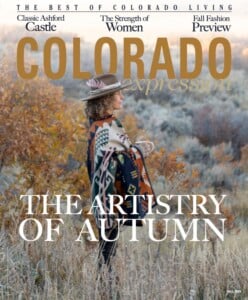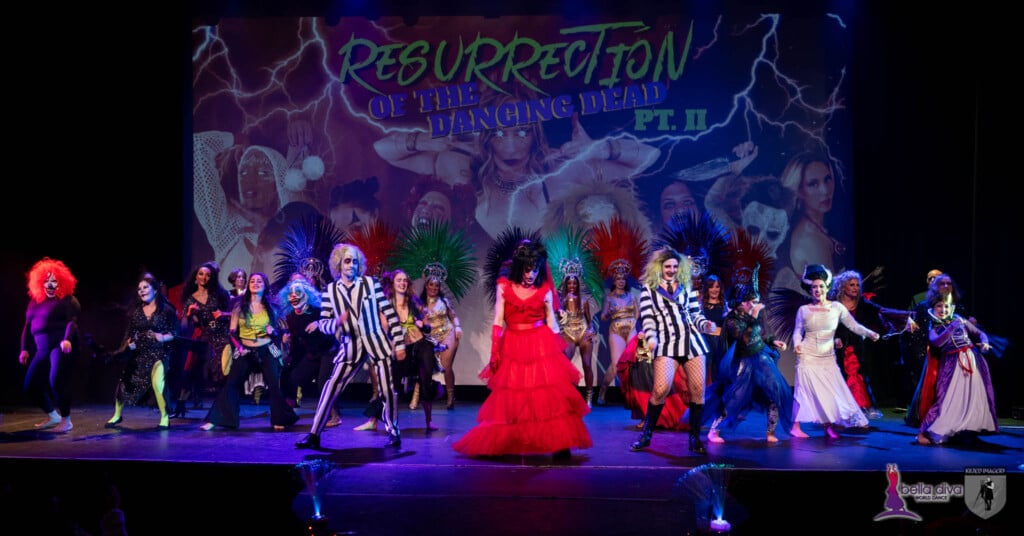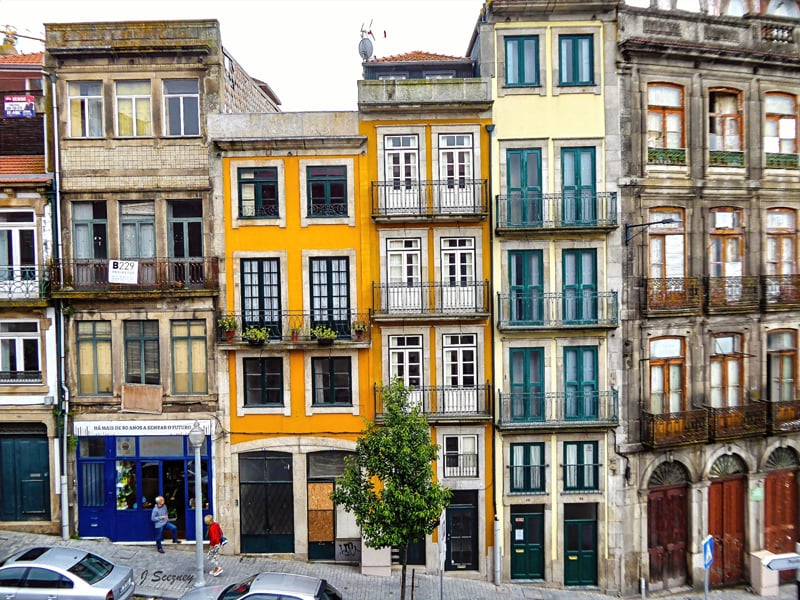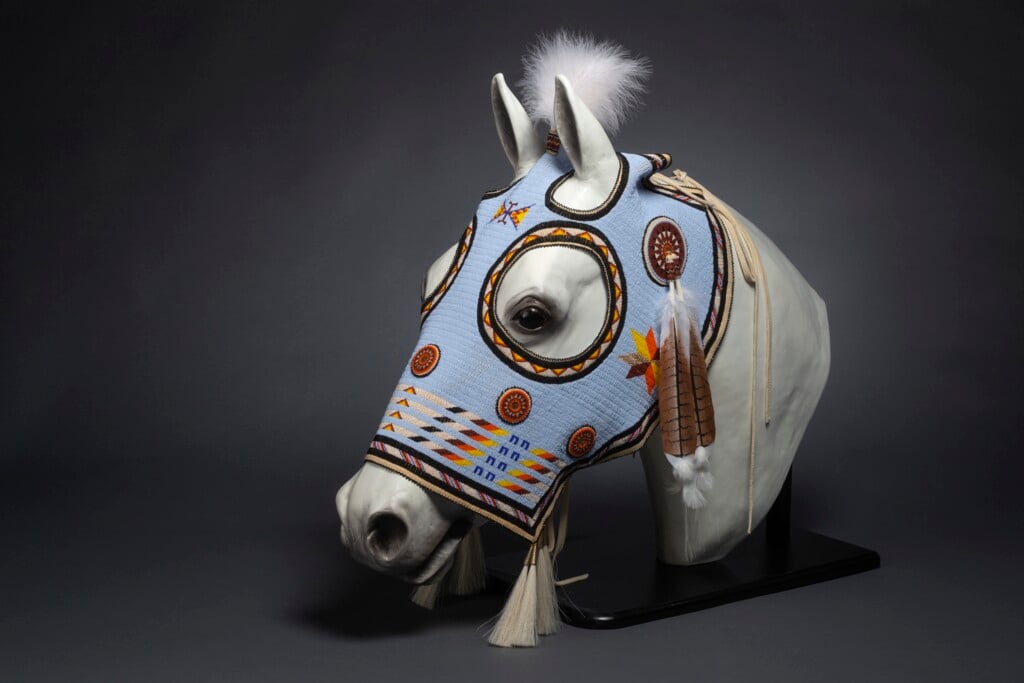A Denver Treasure Trove Full Of Historic Western Artists
David Cook Galleries taking guests on a walk through history with their beautiful historic artwork and loving team of experts

Thomas Moran (1837-1926) “Grand Canyon of Arizona from Hermit Rim,” 1912 Chromolithograph 28 x 37 inches | Images courtesy of David Cook Galleries
Just around the corner from the Oxford Hotel sits a treasure trove of history lovingly stewarded by a team of experts: David Cook Galleries. These galleries, and their namesake, are known in the art world as a preeminent authority on not only museum-quality American Indian art, but also historic and modern regional artists and their affiliated schools and organizations.
The gallery is owned and run by David and his wife, Linda Cook.
Linda says David, who was born in Texas, “moved to NYC as a hippie in the ’60s. He sold plane tickets in hostels to afford a three-week trip to Italy; he stayed three years!”
Ever the collector, David was also enchanted with Native American history. “He had a movie producer friend he met in Italy who wanted to do a Hopi documentary,” says Linda. While working on that project in Arizona, David fell in love with the culture, art and history of the Hopi people. He returned to Denver and had the opportunity to buy an entire portfolio and volume set of Edward Sheriff Curtis’ massive photography project, “The North American Indian.” Bankrolled by J.P. Morgan, Curtis was the seminal photographer of tribal life and customs at the turn of the 19th century.

Birger Sandzen (1871-1954) “Silent Waters (Colorado),” 1923 Oil on canvas, signed and dated lower left 36 x 48 inches
The documentary wasn’t finished, so David decided to sell the Curtis set. More importantly, Linda says, seeing and experiencing this ancient and marvelous culture changed David’s trajectory. Then, as their Native American business grew, they realized much of our rich regional artistic history was at risk of being lost. “He was going into estates to buy the Native American art and seeing all of this other art that was important historically—Thomas Moran, etc.—and realized these treasures were not being given the credit they deserved. These extraordinary artists were not being well represented,” she says.
Linda is the daughter of a Bauhaus artist herself. She studied philosophy before her time as a chef in Santa Fe, then married David and became a gallerist 45 years ago. “Back then, we would work for a full year to get an exhibit together; now I change the exhibit monthly.” One gallery is dedicated to American Indian art, and the other to the regional creators of fine art they represent.

Charles Partridge Adams (1858-1942) “Clear Creek (Colorado Mountain Landscape, likely Lyons Park in Golden, Colorado) ,” 1890 Oil on canvas, signed and dated lower right 16 x 24 inches
Notably absent from these gallery walls is much of the traditional cowboy and Native American subjects so plentiful in many regional collections. “I just always wonder, how political were some of these paintings?” she asks, admitting the answer is not easy to come by.. “They painted the cowboys so clean, the Native Americans by fireside. Where was the tuberculosis? You know? They were so fraught with romanticism and sentiment, evoking the feeling they want you to have. My emotion is more in nature. I don’t like to be manipulated. I want to be inspired.”
That ethos has driven her choices as the gallery grew to represent more regional artists. “This is the only way I knew how to change the world. To inspire with beauty and nature,” she says.
The first show the Cooks held in the gallery was “John F. Carlson and Artists of the Broadmoor Academy,” showcasing the works of artists who were part of the nationally recognized art colony founded by Julie Penrose in 1919, now known as the Colorado Springs Fine Arts Center.
It wasn’t until 20 years later that Linda Cook says they began to see a major shift in the habits of collectors. Many of the well-known European artists were not readily available anymore, so buyers started looking to American artists from different regions to add to their collections.
Linda Cook says one historic regional artist, also part of the Broadmoor Academy, particularly struck a chord with collectors: Birger Sandzen, a Swede who moved to Kansas in 1894 to accept a teaching position at Bethany College. With that move came a shift from his darker Scandinavian style to a much lighter and brighter color palette. Eventually his work had much more in common with the French impressionists with whom he studied.
Linda Cook says Sandzen was smitten with Colorado and would head west to paint on every occasion he had. She believes he had what often sets the very best of the historic artists apart: a vivid, passionate and expressive style. “He was extraordinary with color, light, sunsets, sunrises.”
Another extremely important historic artist, in Linda Cook’s eyes, is Charles Partridge Adams. Adams moved to Denver from the East Coast in 1881 after first falling in love with Colorado’s mountains on a three-month camping adventure with another young artist. Eventually he had both a studio in Denver and a summer studio in Estes Park. He was a prolific painter of oils and water-colors, the latter of which traveled home with many tourists of that time period.
Adams was truly painting pictures of Colorado for the rest of the country, says Linda. “You could just fall into them. The sunsets. The mountains. The creeks. She believes Adams was a charming man, full of enthusiasm for Colorado and his subject matter, which he passed on to those who purchased his work. “They became something important, because they become part of a family’s story. Things like that aren’t likely going to wind up in a garage sale.”
Albert Bierstadt is another historic artist who Linda Cook credits with much of the world’s view of the American West. A Hudson River School artist, he was also considered a “luminist,” masterful at depicting our Rocky Mountain majesty bathed in heavenly light, beckoning all to their glory. If you’ve visited the Broadmoor or any other Philip Anschutz-owned institutions, you have likely taken in Bierstadt’s mystical, awe-inspiring oil paintings of various mountain landscapes and native dwellings.
Linda Cook says most of these artists are non-Native men, because they were sent to the American West on exploratory or expansionary missions. For this reason and others, women and minority artists have traditionally been underrepresented in Western regional art collections. She does see a movement, in both the public and private space, to balance collections with minority art and art more representative of the viewpoints of all.
Linda Cook says these regional artists endure because they all had an absolute passion for this area: “They had enthusiasm for the land, the landscapes, the Platte River, for example.” They were skilled at capturing a fleeting moment in the history of this land, and “the very best of these artists were masters at translating what they saw, what they felt, and what they experienced into art. “Some really big artists—Diebenkorn, Motherwell, Rothko—they came out here, but they didn’t get it. They said, ‘What’s all this hiking about?’”
Linda and David Cook continue to celebrate the beauty and history of Colorado through art. “I like that we are a place (where) people feel they can come and, for a bit, leave everything at the door. “Her favorite thing is to simply watch people as they take in all the art, “no matter the price tag … . When you watch, you can just see the change in their body. It takes your breath away.”
Linda Cook feels very obligated to make sure these artist’s’ legacies continue. “My vision is the legacy of the lost. The artists, the landscapes, the mines, the river. These things are only captured in these paintings.”
1637 Wazee St.
303-623-8181
Anna Jensen is an international fashion journalist and stylist. She grew up in an equestrian family in Colorado and most days you’ll find her horsing around with her daughter or planning their next travel adventure!







